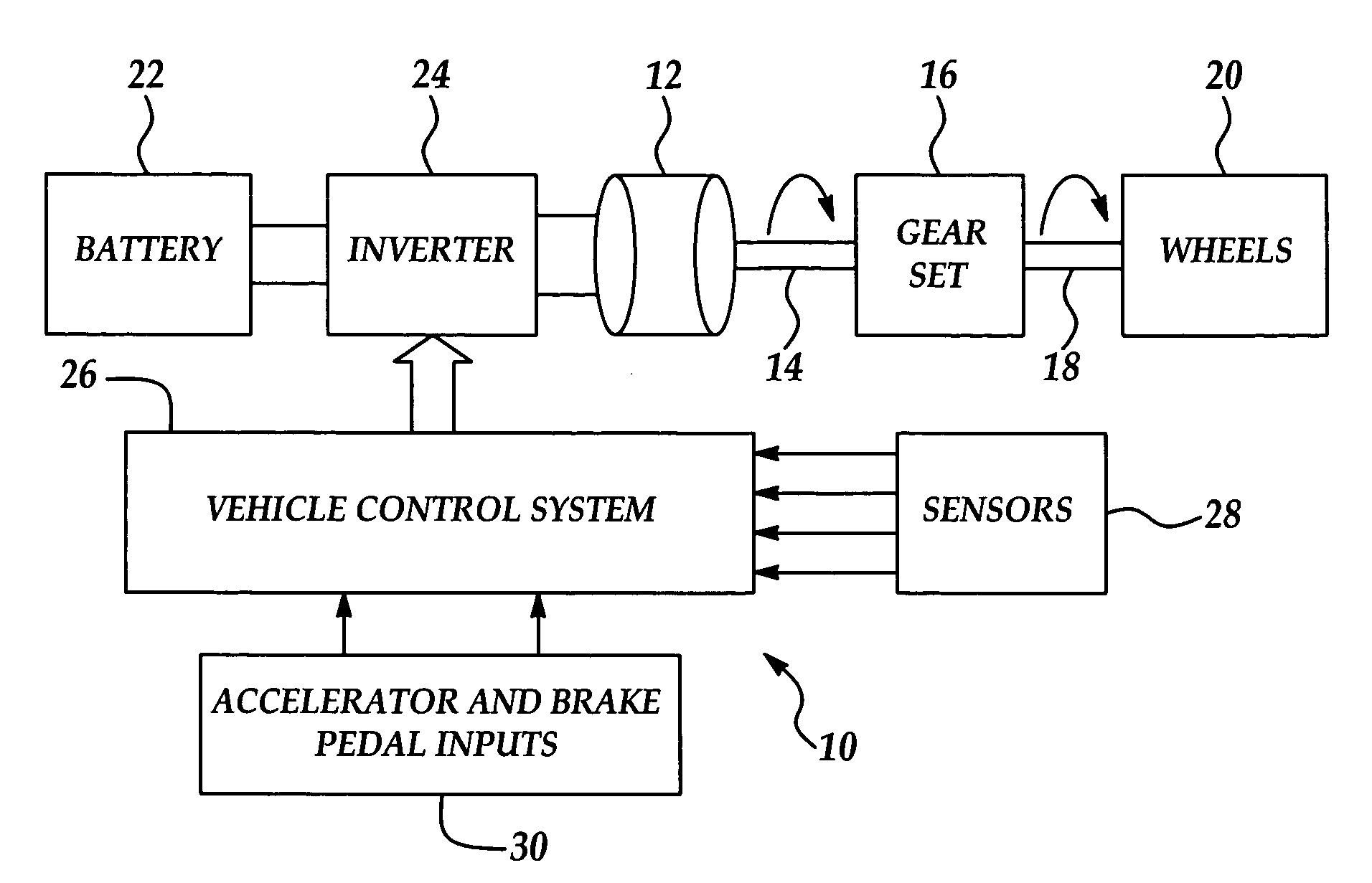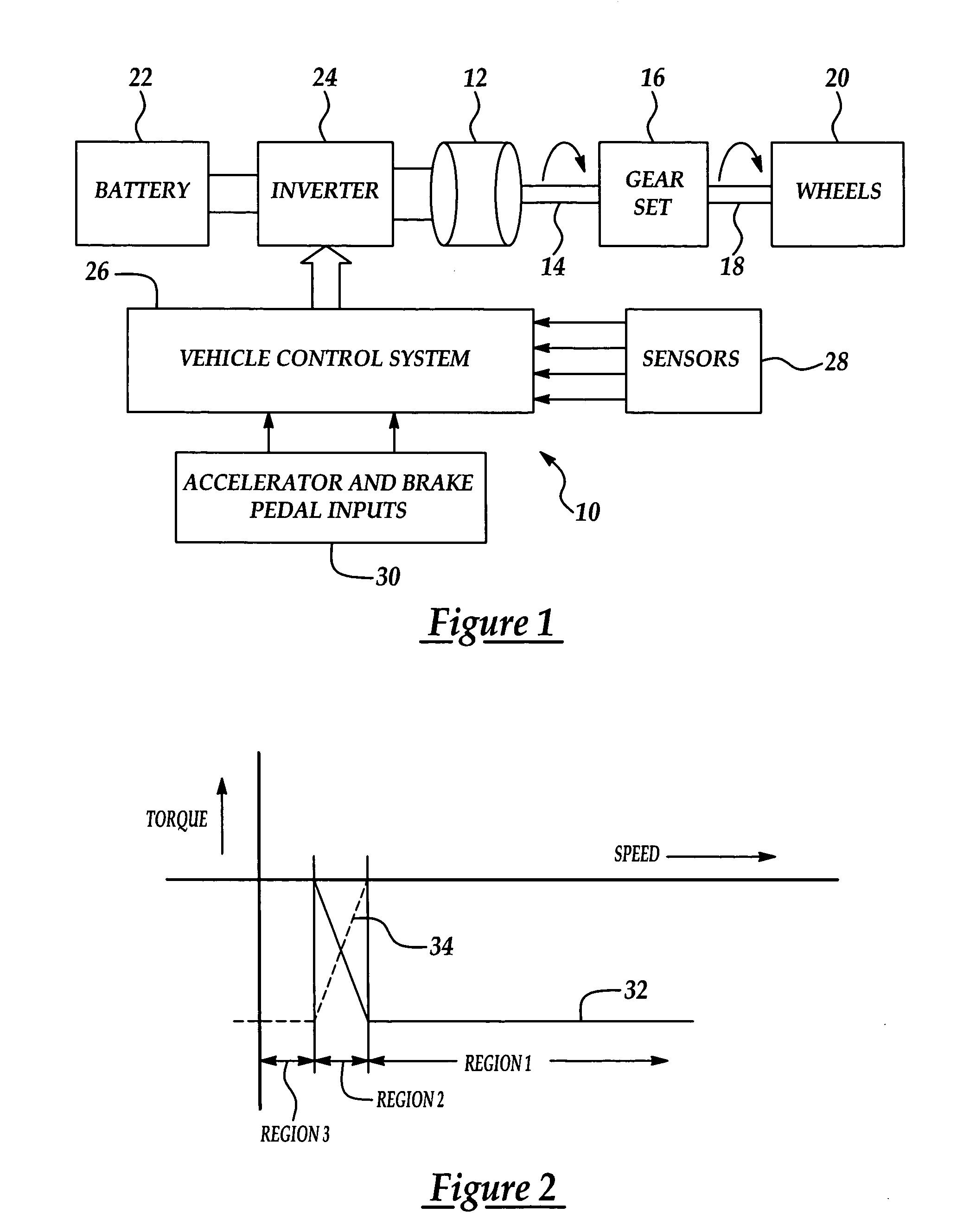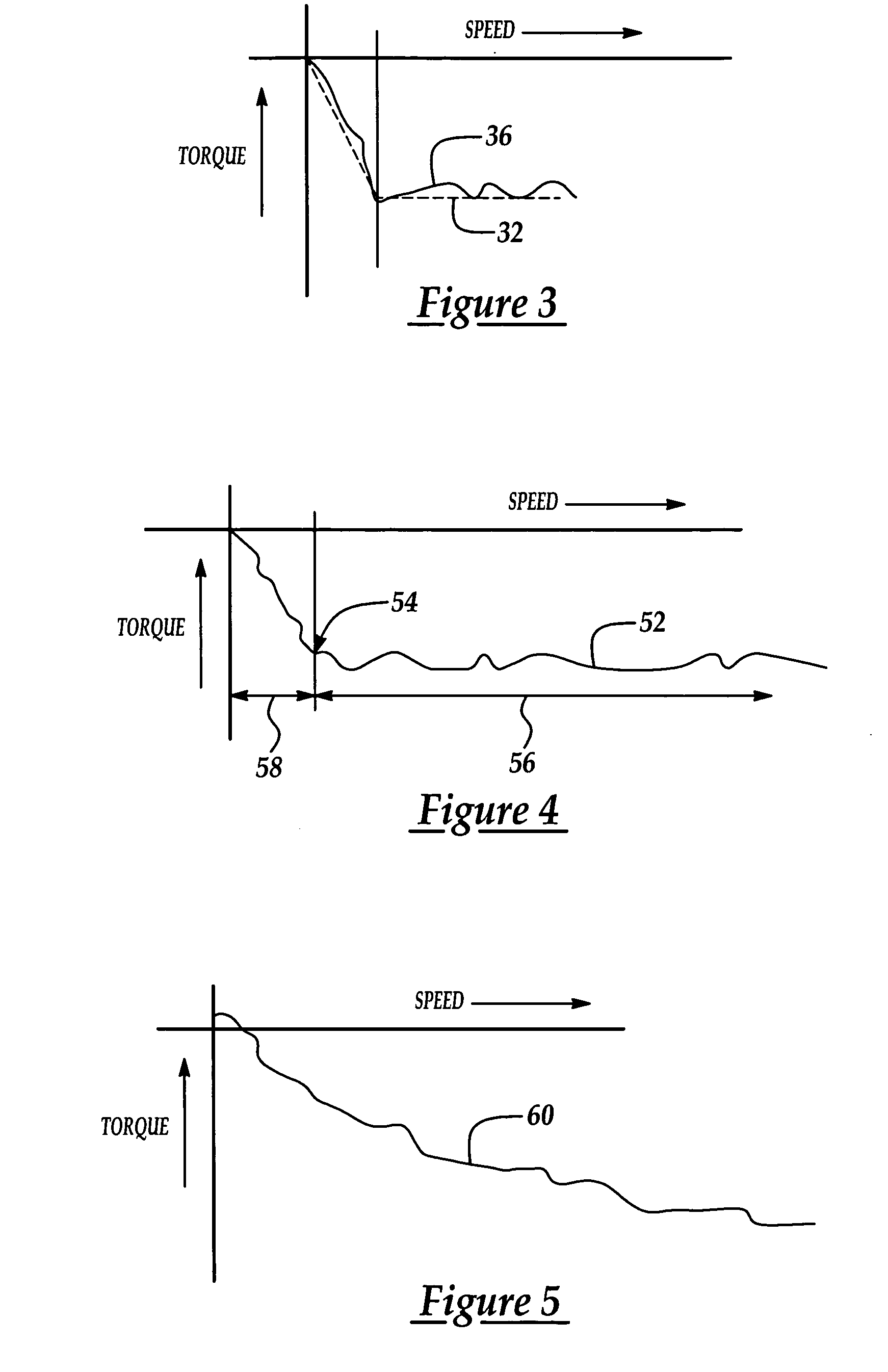Method and apparatus for braking and stopping vehicles having an electric drive
a technology of electric drive and braking system, which is applied in the direction of braking system, instruments, analogue processes for specific applications, etc., can solve the problems of inadequacies, inability to adapt to electric drive configurations, and inability to optimize the dual braking strategy described above, so as to reduce the need for conventional friction brakes and avoid conventional friction brakes.
- Summary
- Abstract
- Description
- Claims
- Application Information
AI Technical Summary
Benefits of technology
Problems solved by technology
Method used
Image
Examples
Embodiment Construction
[0019] The invention relates to a method and apparatus for decelerating, braking and stopping a vehicle equipped with an electric drive system which includes an electric motor. A typical electric drive system 10 is shown in FIG. 1. An electric motor 12 mounted on the vehicle's chassis has an output drive shaft 14 which is connected through a differential gear-set 16 to a drive axle 18 carrying one or more traction wheels 20. Energy for powering the motor 12 is derived from an on-board storage battery 22 which provides DC power that is converted by an inverter 24 into AC power used to drive the motor 12. Although an AC motor 12 has been disclosed here, it should be noted that the present invention is suitable for use with a variety of DC and poly-phased AC motors. A vehicle control system 26 coordinates and controls the operation of the energy storage and drive components, and manages system functions such as charging, engine starting and stopping and regenerative braking. The vehicl...
PUM
 Login to View More
Login to View More Abstract
Description
Claims
Application Information
 Login to View More
Login to View More - R&D
- Intellectual Property
- Life Sciences
- Materials
- Tech Scout
- Unparalleled Data Quality
- Higher Quality Content
- 60% Fewer Hallucinations
Browse by: Latest US Patents, China's latest patents, Technical Efficacy Thesaurus, Application Domain, Technology Topic, Popular Technical Reports.
© 2025 PatSnap. All rights reserved.Legal|Privacy policy|Modern Slavery Act Transparency Statement|Sitemap|About US| Contact US: help@patsnap.com



